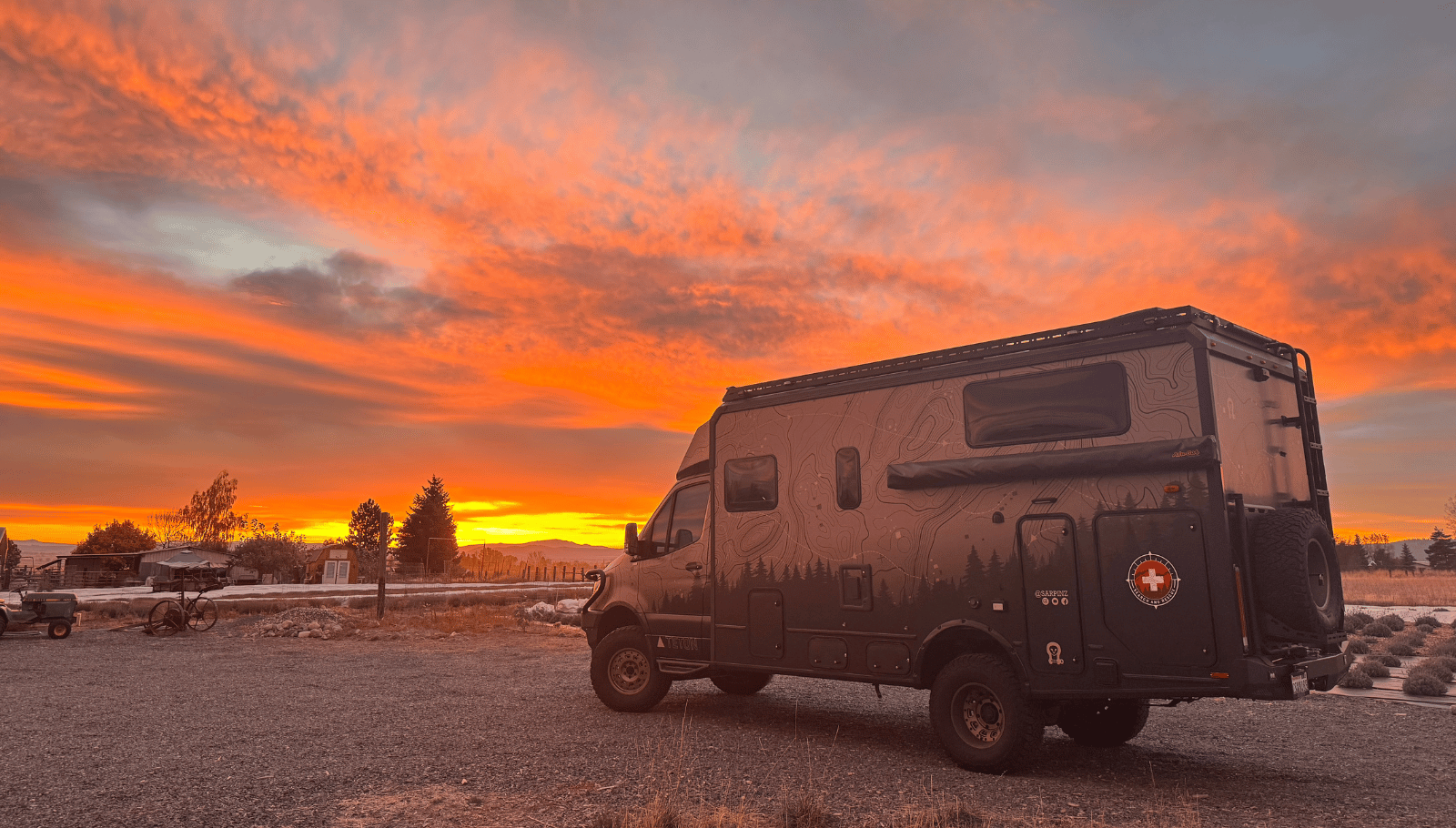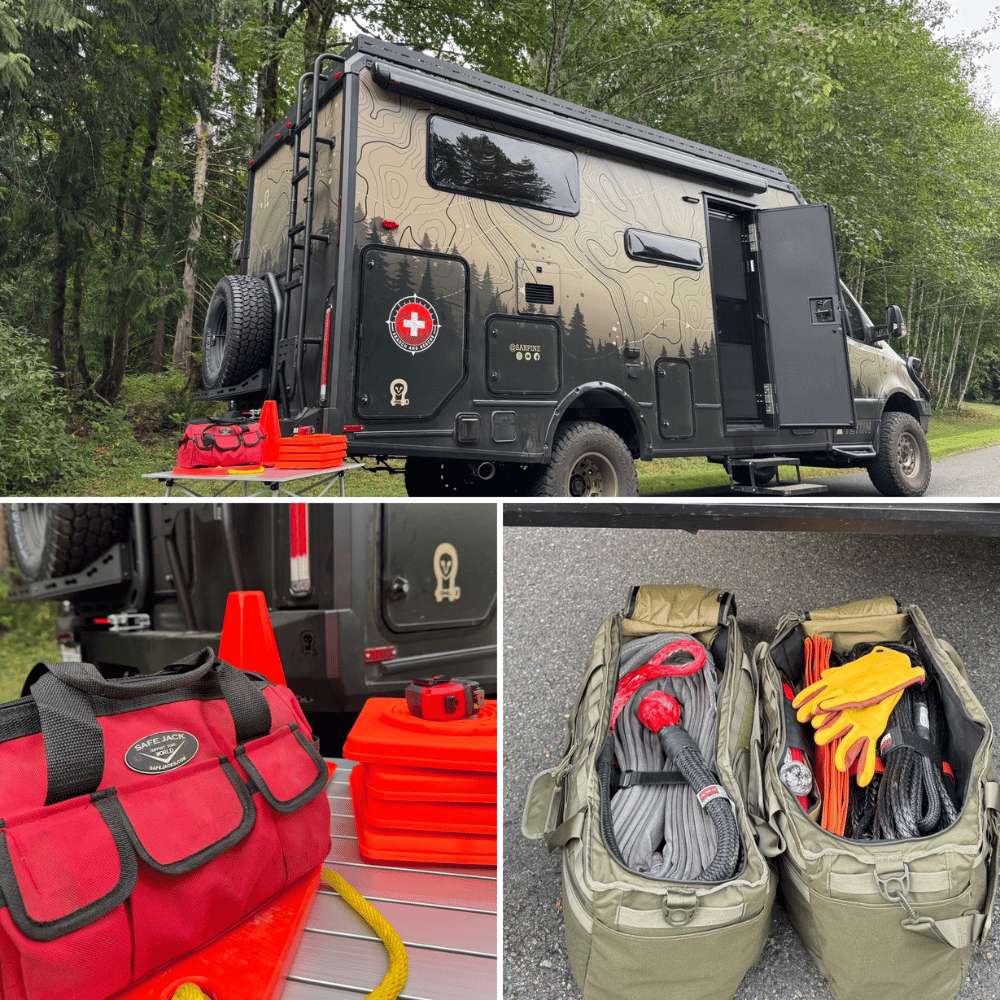Your Cart is Empty
Free Shipping on All Orders // Black Friday Starts Now
Free Shipping on All Orders // Black Friday Starts Now
Free Shipping on All Orders // Black Friday Starts Now
November 14, 2025 4 min read

Some builds are made for weekend getaways. Others earn their stripes on mountain trails, river crossings, and long nights when people need help most. Branden “Ben” Powell’s SAR-V does both. Based in Redmond, Washington, Ben chose the 2026 Owl Vans Ekko Teton Limited Edition as his foundation and turned it into a family adventure rig that can also answer the call for Search & Rescue. With six inches of lift, 35s, mission-ready lighting, and the full HEST sleep setup riding inside, the SAR-V is built to go wherever the day demands. This is how it came together, what he’s learned along the way, and why this rig has already proven itself on the trail.

Your Name: Branden “Ben” Powell
Location: Redmond, Wa
Rig Nickname: The SAR-V
Make & Model: Owl Vans Ekko Teton Limited Edition (1 of 15)
Year: 2026
HEST products: Down Comforter, Duvet & Camp Pillows
What made you choose the Toyota Tacoma as your base?
Can you give us a top highlight overview of your buildout and its key features?
6” of suspension lift, 35” tires, off road bumpers, steps and rack for protection, winch and recovery points for helping myself and others get unstuck, Search & Rescue lighting, radios, and first aid for mission and training use.
What were your main goals or priorities when designing and building your rig?
Combine the most critical attributes of a good adventure rig, while being Search & Rescue capable and ready for multi-day trainings, events, and missions.What were some of the biggest challenges you faced during the build process?
Biggest challenge was design. Trying to be both a reliable family adventure vehicle, while also able to withstand the rigors of Search & Rescue is a tall order. Finding the Owl Vans Teton platform really simplified the design process by providing a very solid starting point.
How many dollar signs on a scale of 1 to 5 is your build (5 being the highest)?
$$$$$
What products, brands, or upgrades are you most excited about in your rig?

How much time and effort did the entire process take, and was it worth it?

What’s one feature in your rig that you’ve learned you cannot live without?
Timberline Diesel heating and hot water system. It shares fuel with the vehicle fuel tank so I don’t need to think about it separately, is fast and efficient, and the hot shower is really appreciated after a long day of fun or Search & Rescue work.
Are there any features or upgrades you wish you had added (or done differently)?
Not yet, we’ve only had it for 6mos and are still putting it through its paces. I’m sure we’ll find its shortcomings as we go on more trips and it is used in more missions/trainings.
Where is the coolest place you have taken your rig?
This trip (Moab) is the best yet. The other two would be Cooper Mountain (near Alta Lake) and Lake Spilyi (in Cle Elum). While neither are exotic destinations, what made them cool was our ability to take a rig this big to the top of a mountain on trails made for ATVs and Jeeps to an amazing vista, or right down to the waters edge where dozens of people were getting stuck (including me) with the ability and gear to help us all get unstuck, enjoy the sunny day at the beach, and drive safely home. I love helping others.
Do you have any advice for someone just starting their overland rig build?
Don’t get overwhelmed by all the advice and options, many will try to tell you they know the best solution for some aspect of your build. And that may be true for them, but not necessarily for you. I recommend starting by sitting down, with whoever is going to be your travel companion(s), and make a list of “requirements.” What do you want to be able to do with your rig, where do you plan to go, and what are the must-haves. Then keep asking yourself if there’s anything else, and write that down. Then go back and force yourself to put a 1 next to the absolute must-haves, a 2 next to the nice to haves, and a 3 next to the things you can probably do without. Try to get to an even number of all 3. Your final list, that you’ll use to design your build will be all your 1’s and half your 2’s. Keep all the rest of the 2’s and 3’s on a separate sheet to reference in case you can toss a couple in easily, without disrupting or displacing your primary list. In the end you’ll have a build that’s just right for you!

